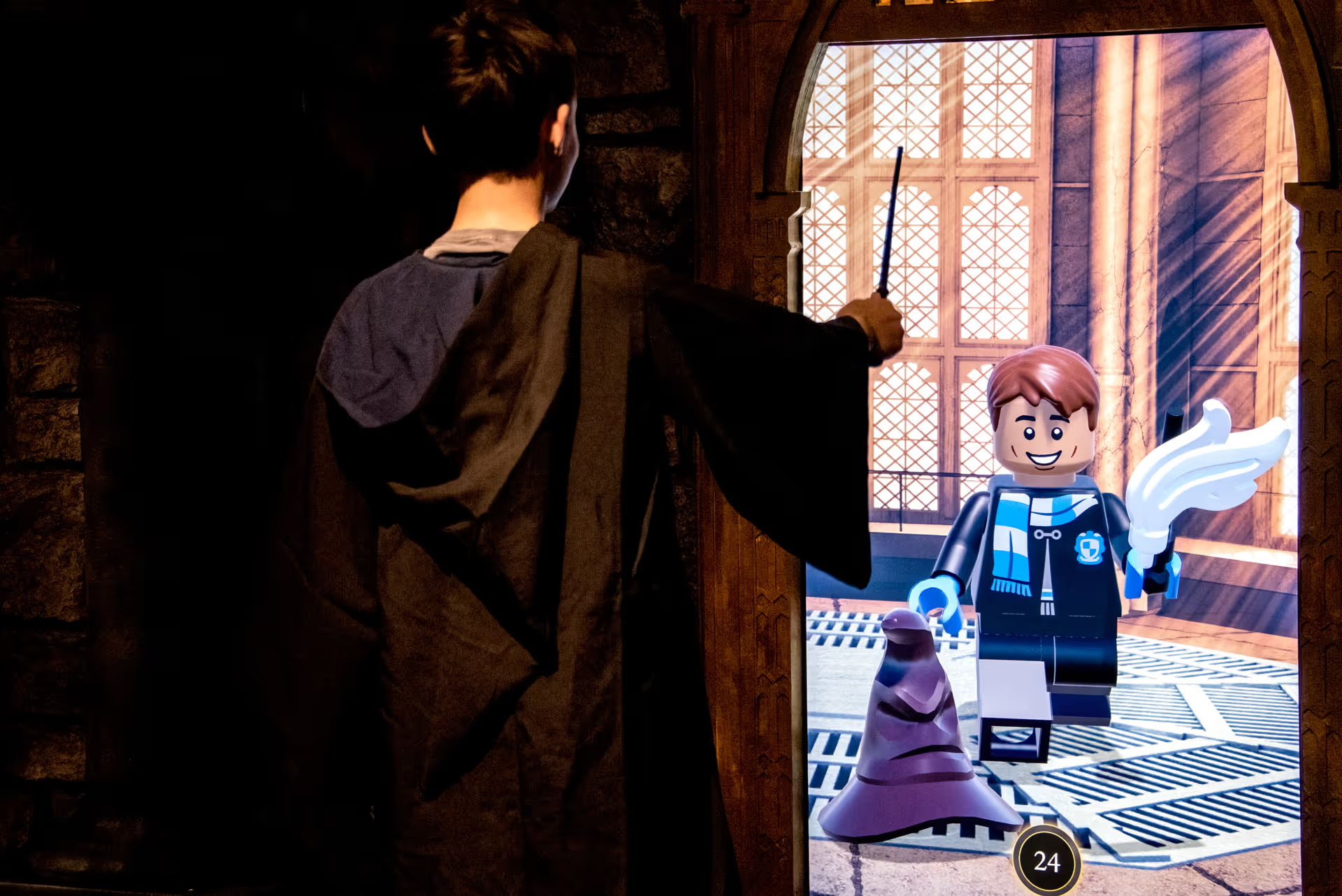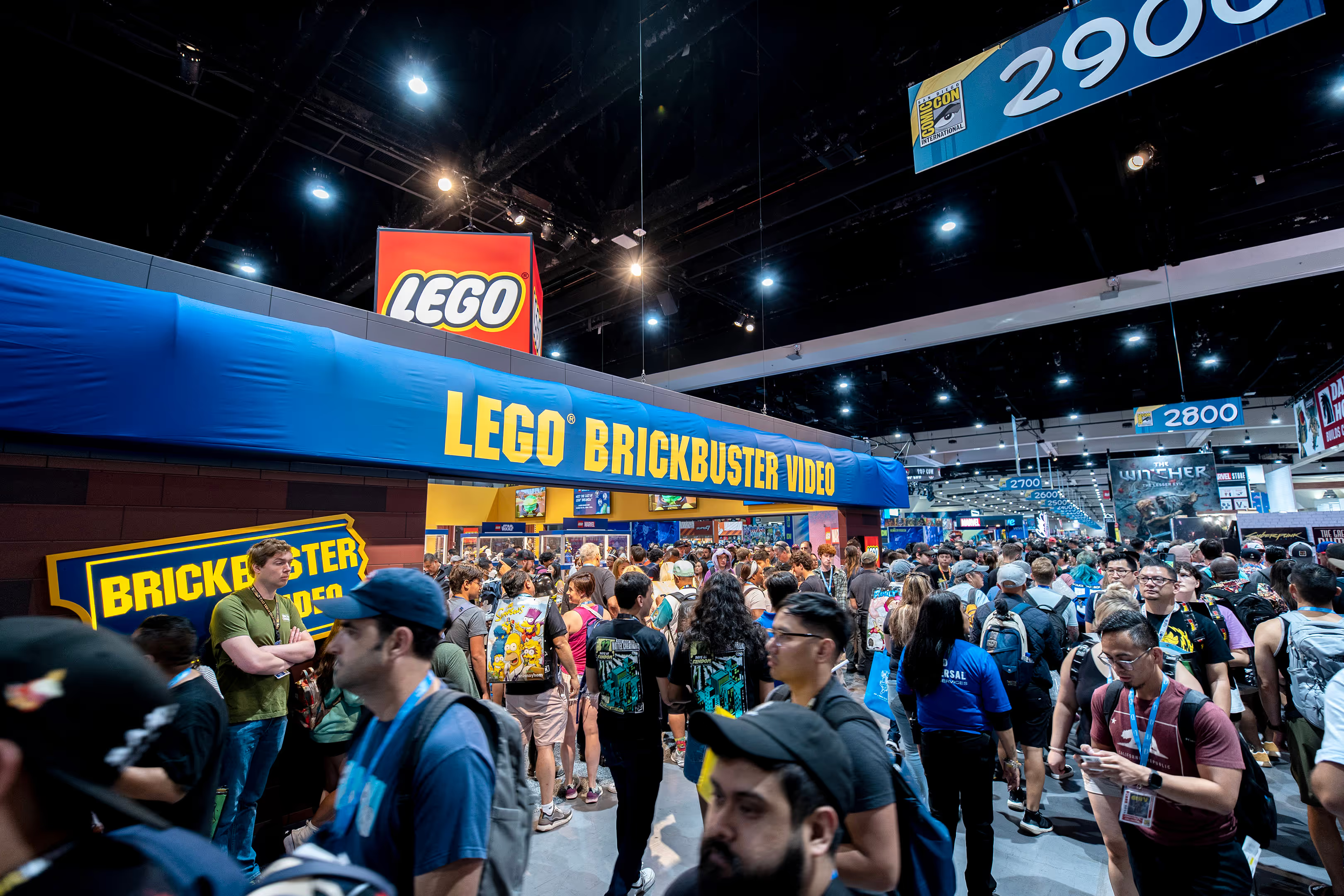Our team is on their way to San Diego Comic-Con 2024, the mecca of geekdom, to build out epic experiences for the LEGO Group and Adult Swim’s Rick and Morty. But before we head behind the scenes, we wanted to share a few thoughts on what it inherently means to be a fan and how you can tap into the power of fandom. Because if there’s one thing we believe, it’s that a collective fandom of hearts on fire is the most powerful commodity of all.
First, let’s level set. You may not identify as such, but you, yes even you, are a fan. Chances are there is something in your life that you were at some point, and probably still are, at least a little obsessed with. And if you aren’t? Go find something, it’ll make your life a little more interesting and make you feel a little more human. In fact, 85% of people online, ages 14-44 describe themselves as a fan of someone or something.
But what defines fandom? What’s at the core of it? And how can you as a marketer and experience designer connect with an existing fandom and make them feel like they belong at your experience more than any other place on earth?
WHAT DEFINES FANDOM
People have a tendency to associate fandom with more “geeky” properties like Star Wars, Doctor Who, or Harry Potter, but fandoms cover a wide range of “fan-objects” from car brands to sports teams, music, movies, games, TV shows, pop culture, celebrities, influencers, and more.
Whether it’s developing a personal attachment to a movie series, participating in rituals around a favorite sports team, wrapping ourselves in the nostalgia of a beloved childhood book series, being a member of a digital and/or IRL community of like-minded music enthusiasts, or deriving new passions such as collecting memorabilia from a popular TV show — fandom is a way for us, as humans, to find a deeper level of meaning, shared love, and connection.
THE BUSINESS OF FANDOM
Fandom is unique in that the relationship between the fan and the fan-object is often rooted in and/or expressed through commercial enterprise. Purchasing and consuming media, tickets, merchandise, apparel, etc are the most accessible mechanisms for fans to directly connect with a fandom. Fans are aware of the commercial nature of these activities but are willing to participate as a means of ritual consumption as long as the connection is authentic — they are not buying into the product for what it is but rather for what it stands for. According to David Allison, author of The Death of Demographics: Valuegraphic Marketing for a Values-Driven World, consumers are willing to pay 12% more for a product if it aligns to their values, so meaning is key.
To take it a step further, these purchased items often become a way for fans to signal their love of, support for, and dedication to a particular fandom and community. This signaling is an important part of personal fan-object dynamics as fans are inherently evangelical — it is human nature to want to share the thing you love with others in order to foster new and deeper connections. This can make fandoms a powerful force for not only sustaining a commercialized fan ecosystem but also growing it. When we feel like we belong it has lasting effects where fans are 167% more likely to recommend their “fan-object” to others.
So how can we as brand shepherds, creators of experiences, and torch bearers for IP authentically tap into fans’ passion and inherent evangelism while respecting the balance of meaning with commercial and marketing interests?
HOW TO CONNECT WITH AN EXISTING FANDOM
There are three important strategies that you can leverage when attempting to connect, drive meaning, and foster belonging with an existing fandom:
- Binge instead of cringe
- Dive into the deep end of the fan pool
- Let your geek flag fly
BINGE INSTEAD OF CRINGE
When approaching an unfamiliar fandom there are four words you should avoid using at any point, “I don’t get it”. Whether “it” is Trekkies, Furries, Bronies, Mahomies, or Swifties you should always start with an open mind — it is not necessarily for you to “get”, but for you to empathize with the fans and attempt to understand why they “get it”. This starts with tapping into your inner fan, understanding why you are passionate about the things you love, the feelings and emotions that surround that, and how you express it. Then apply that same level of understanding to become a fan of the new fan-object.
Immersion is an important first step. It may seem obvious but you cannot understand or appreciate a fan-object until you’ve experienced it firsthand. This means binging every season of the TV show, listening to the band’s full catalog, reading the entire book series, etc. Ideally as a new viewer you are doing this “cold” or, if you are already familiar with the fan-object, re-experiencing it with “fresh eyes”. Then dive deep into secondary sources and immerse yourself in the fan community to better understand the different ways that they connect with and celebrate their fandom.

The XDA Effect: Doom Patrol
When our team was briefed to develop an activation at New York Comic Con to promote season 3 of HBO MAX’s Doom Patrol, we started the project by watching the entirety of the first two seasons. Early on we identified Danny the Street, a sentient genderqueer street who protects society’s misfits from the outside world (it’s a weird show) as an icon who fans could connect with, and was transforming into an Ambulance (like we said, it’s a weird show) in the upcoming season. We transformed a full size ambulance into Danny with a graphic wrap and placed it as the main attract point paired with a photo-op. An interactive screen allowed Danny to communicate and connect with the audience while live Drag Queen performances helped bring the spirit of Danny’s character to life. Fans LOVED it, the activation was busy all weekend long, crowds packed in for Drag performances, and more than a few fans ran up to Danny and hugged them… which, if you’ve never seen someone hug an ambulance before, is quite an amazing sight.
By taking the time to understand and become fans of the source material, immerse ourselves in the community to understand what characters mattered and why, and then bring that to life in a unique and eye-catching way we created a moment that truly resonated on both a fun and, in some cases, emotional level with fans.
Check out the full project story.
DIVE INTO THE DEEP END OF THE FAN POOL
By equipping yourself with knowledge about how fandom functions, you are better able to identify and navigate the intricacies of individual fandoms. There are numerous books and articles dedicated to the broader study of fandom, as well as specific fandoms and fannish activities, which can provide valuable insight into the psychological and sociological origins and motivations of fans and fan behaviors (you’ll see a few of our favorites at the end of the post).
Equally important is considering where you’re activating — your strategy and creative should scale based on the physical context and audience you’re trying to appeal to. The approach used for reaching established fans of an existing property at San Diego Comic Con is going to be much different than the approach used for reaching potential new fans of a new property in Times Square. Imagineer Tim Kirk’s framework of waders, swimmers, and divers can provide a valuable structure for thinking through the levels of story and fan immersion:
“The Waders just want to walk around and see pretty pictures. The Swimmers want to get a little deeper; they might want some backstory, they might want to get into it a little more. And the Divers really want to know every shred of information that exists about that particular subject.”

The XDA Effect: Rick and Morty Wormageddon
Rick and Morty fans are of a different level of hardcore. When it came time to promote the 6th season of Rick and Morty it was clear that the fanbase was willing to go to the ends of the earth to prove their fandom. We harnessed their dedication by designing a global scavenger hunt with online clues that sent fans to real world destinations for the chance to win a golden Rick head and to check out massive life-size Rick and Morty character sculptures and art installations. Fans stalked social media for clues and showed up in droves to capture photos with the sculptures in isolated locations like a remote beach in Brazil and an abandoned subway station in Toronto, as well as more public spaces such as Emirates Stadium in London and State Farm Arena in Atlanta.
The stunt worked because the fanbase had already proven time and time again they were extremely active and engaged both online and off. A similar scavenger hunt style activation would have most likely failed for an IP with a less engaged audience or a new IP with no audience. Understanding the fans and the spaces in which they moved, or were willing to move, provided the context and the confidence to pull it off.
Check out the full project story.
LET YOUR GEEK FLAG FLY
While fans are generally cognizant of the commercial relationship that exists between themselves and the fan-object they are also inherently skeptical and protect their fandoms from outside influences that are seeking only to capitalize on it. Crafting experiences and campaigns that reflect a deep authentic understanding of the fan-object and genuine appreciation for the fans and fandom are the best ways to overcome this skepticism. If you can prove to the audience that you yourself are a fan through the creative and execution, then you will win them over.
The most authentic way to prove credibility is through proficiency in the fan-object’s stories, lore, icons, characters, locations, etc. Your activation should be a reflection of that world building and provide multiple opportunities to connect with it. Infusing small and big touches into your experience that nod to that understanding of the fandom will reinforce that sense of authenticity. Look for opportunities to sprinkle in deep references or easter eggs that will provide a moment of surprise and delight for the fans to strengthen that connection. Just make sure you get it right, fans are also notoriously critical and will fawn or fight over the smallest of details.

The XDA Effect: The LEGO Mirror of Erised
Harry Potter is one of the most recognized IPs in the world. When LEGO asked us to develop a brand activation as part of a larger pop-up experience — Harry Potter: Magic at Play — we knew we’d have to go above and beyond to deliver an experience that connected the brand with the fandom in a real and compelling way. We created the LEGO Mirror of Erised, an interactive world where guests could see themselves transfigured into LEGO Harry Potter Minifigures using an AR-enabled digital mirror. The scenic build was designed to look like the halls of Hogwarts with each piece of hardware carefully integrated into the set design, as iPads became enchanted books, and the TVs and sensors were embedded into stylized mirror frames and faux stone alcoves. Even the product display and LEGO logo were designed to thematically blend in with the surrounding structure. Something that could have broken the immersion (screens, technology, logos, etc) instead became an opportunity to add additional layers of in-universe storytelling which created a seamless magical storyworld for fans.
By carefully considering how the activation exists within the story world, paying attention to the details, and layering multiple levels of references for fans to discover, we created a unique and magical experience that truly connected fans with the LEGO brand in a new and magical way.
WANT TO GEEK OUT MORE ON FANDOM?
In case you couldn’t tell, we are massive fans of fandom, belonging, and experiential storytelling. Don’t hesitate to reach out and chat more about how to put these fandom strategies into action.
And if you want to nerd out even more on this topic, we have many other great resources at your disposal to help you equip yourself with the right knowledge and context for how fandom functions so that you can better connect with individual fandoms.
Check out some of our favorite resources here:
- Fandom: Identities and Communities in a Mediated World
- Superfandom: How Our Obsessions are Changing What We Buy and Who We Are
- See You At San Diego: An Oral History of Comic-Con, Fandom, and the Triumph of Geek Culture.
